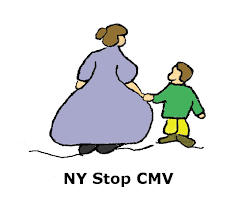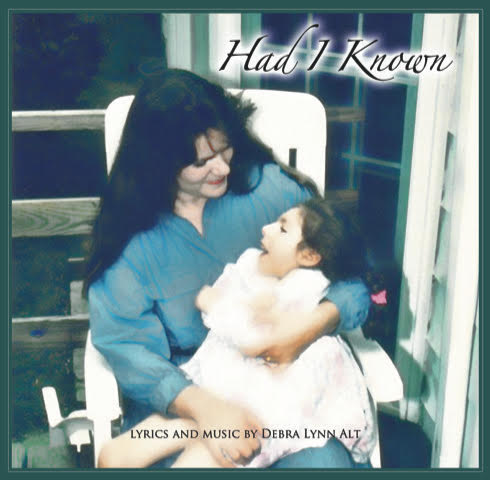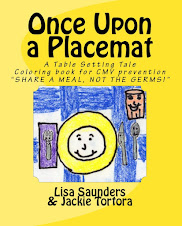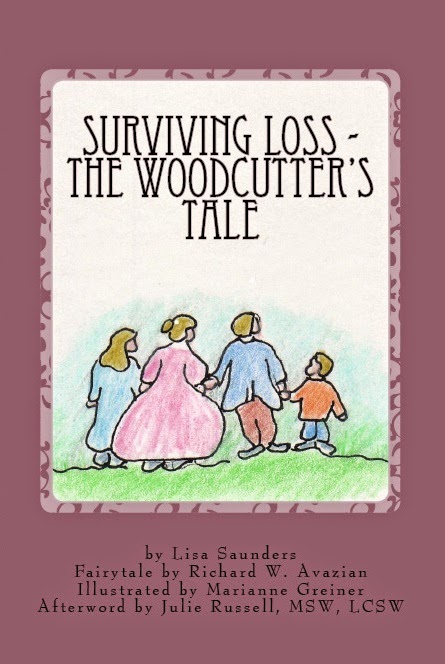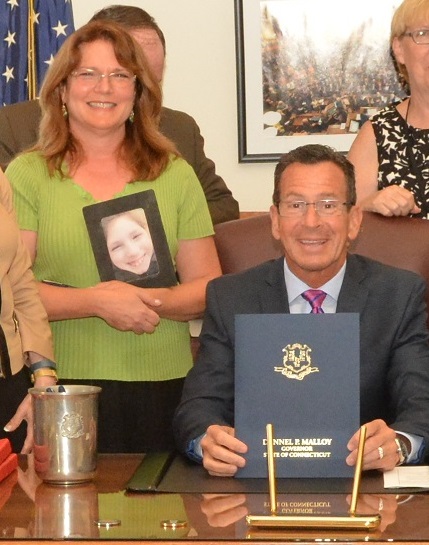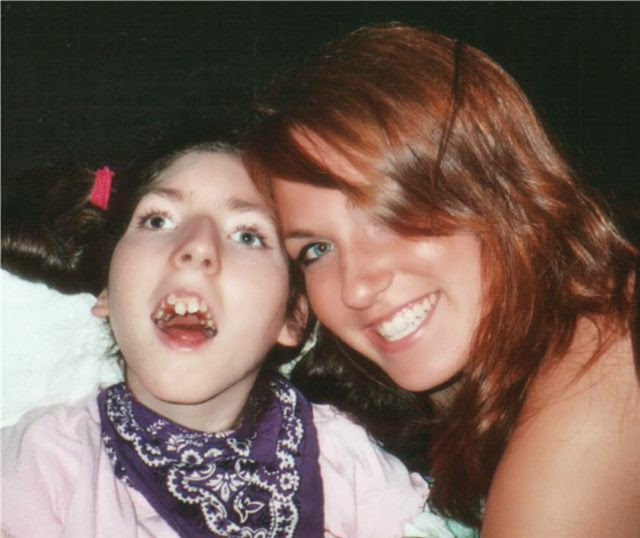I know several mothers who are missing a child this holiday season. Hopefully, they have found - or will find - a way to honor their child's memory and a reason to move forward until they meet again.
One mom, Marti Perhach, just told me her holiday tradition: "We have a little stocking for Rose and a little tree we put up for her every year." Rose, Marti's fourth child, was stillborn due to group B strep (GBS). Marti has made it her mission to help prevent this from happening to other families. "Although there are many ways to constructively work through grief and honor the memory of a loved one, what helped take the edge off the pain for me has been to advocate for awareness and prevention of group B strep disease, the cause of Rose's death in utero." Marti Perhach is the co-founder of Group B Strep International (GBSI) and contributed significantly to the collaborative efforts to successfully campaign for universal screening for GBS.
My daughter Elizabeth would have been 34 this Christmas 2023 if she hadn't been born with congenital cytomegalovirus (CMV). The moment she arrived on December 18, 1989, I felt a stab of fear. My immediate thought was, “Her head looks so small—so deformed. "The neonatologist said, "Your daughter has microcephaly--her brain is very small with calcium deposits throughout. If she lives, she will never roll over, sit up, or feed herself." Pregnant women who care for young children are at a higher risk for catching CMV because preschoolers are the majority of carriers. Just prior to or during pregnancy, women need to be careful not to kiss young children on the mouth or share food with them. I felt sick at what my lack of knowledge had done to my little girl.
When my husband Jim heard Elizabeth's grim prognosis, he stared at her and said, “She needs me”—just like Charlie Brown with that pathetic Christmas tree. It took me about a year, but I eventually stopped praying that a nuclear bomb would drop on my house to escape my overwhelming anguish over Elizabeth's condition. Life did become good again—but it took a lot of help from family, friends, some Valium, the Book of Psalms, and inspiring movies such as "It's a Wonderful Life," where character George Bailey, contemplating suicide, prayed, "Dear Father in Heaven …show me the way. I’m at the end of my rope…show me the way, oh God.”
Sixteen years later, I awoke feeling so proud of Elizabeth. It was her 16th birthday and just one week before her 17th Christmas. When the song “I’ll be home for Christmas” played on the radio, I cried thinking how hard Elizabeth fought to be home with us, overcoming several battles with pneumonia, major surgeries, and most recently, seizures. Weighing only 50 pounds, she looked funny to strangers as a result of her small head and adult teeth, but she was lovely to us with her long, brown hair, large blue eyes and soul-capturing smile. Although still in diapers and unable to speak or hold up her head, Elizabeth was very happy and especially enjoyed being surrounded by people, paying no mind to the stares of “normal” children who thought she belonged on the "Island of Misfit Toys."
Less than two months after she turned 16, I dropped Elizabeth off at school. Strapping her into her wheelchair, I held her face in my hands, kissed her cheek, and said, “Now be a good girl today.” She smiled as she heard her teacher say what she said every time, “Elizabeth is always a good girl!” With that, I left. At the end of the day, I got the call I had always feared. “Mrs. Saunders, Elizabeth had a seizure and she’s not breathing." The medical team did all they could, but she was gone. While holding Elizabeth’s body on his lap, my husband looked down into her partially open, lifeless eyes and cried, “No one is ever going to look at me again the way she did.”
As we prepare to celebrate another Christmas without Elizabeth, I no longer feel heartache when I bring the decorations out of storage. I smile remembering how Elizabeth used to love to sit on the couch with her lazy, old dog and watch us decorate.
Now, I perform a new Christmas tradition. I carefully unfold the black and red checked shirt Elizabeth wore on her last day and hang it beside the fireplace. Although she can't be home for Christmas, I feel that she is my “Tiny Tim” who would say, if she could, “God bless us, everyone!”
Like my friend Marti, I, too, found a way to take the edge off the pain of missing her. Since Elizabeth no longer needed my care, the only thing I can do for her now is to care for those not yet born—to prevent them from suffering as Elizabeth did. I do that by speaking and writing about congenital CMV prevention. Elizabeth's disabilities might have been prevented had I known to reduce "contact with saliva and urine from babies and young children...not sharing food, utensils, or cups with a child" (CDC.gov/CMV). In 2022, “Elizabeth’s Law,” was passed in New York requiring the provision of CMV educational materials to child care providers and pregnant women (Baldwinsville couple's advocacy inspires legislation for CMV awareness, 2023).
My ultimate dream is that all women of childbearing age will learn about CMV prevention before getting pregnant since half of pregnancies are unplanned. One way I continue to raise awareness is by walking across the State of New York leaving behind "Stop CMV" rocks with CMV prevention tips painted on the back by another mom, Tabitha Rodenhaus. (Learn more from the National CMV Foundation, founded by other moms).
Since commencing our trek in 2020, Jim and I have walked over 2/3 across New York (242 miles) on the 360-mile Erie Canalway Trail between Albany and Buffalo. We tackle new sections of the trail about twice a month – in all kinds of weather. We’ve been chased by mosquitoes, biting flies and lightning. We’ve endured torrential downpours, blinding snow, chafing underwear, aching feet, and swollen knees. We’ve faced snakes, floods, ice, and a smelly, dead opossum. You can join our adventure by clicking on my travel video, “Hiking the Erie Canalway Trail, Vote on 7 Wonders, Stop CMV,” which features why the Canal was considered the 8th Wonder of the World, what it's like to walk, rather than bike, the Trail (even Santa bikes the Trail!), and where my Aunt Rebecca’s body was found in the canal in an apparent suicide. The bridge she likely drove into the canal from reminds me of the bridge over the canal in Seneca Falls, New York, where a woman’s 1917 suicide attempt is noted on a plaque honoring the man who drowned while successfully saving her.
Seneca Falls is believed to be the inspiration for Bedford Falls in the movie, "It's a Wonderful Life." Much of the memorabilia featured in the It’s a Wonderful Life Museum in Seneca Falls was donated by a mother, Karolyn Grimes, the actress who played little Zuzu Bailey. She wanted to honor the memory of her son who committed suicide at 18. "Grimes says the optimistic message of It’s a Wonderful Life, which she helps to spread through personal appearances, resonates because it acknowledges life’s hardships" (People.com). Every December, Seneca Falls hosts an annual "It's A Wonderful Life Festival." Last year, I met actress Karolyn Grimes and was touched by how compassionately she listened to our story about Elizabeth.
Another way I fondly recall Elizabeth's short life is to remember I will see her again someday. My father captured that truth when he wrote the fairy tale, "The Woodcutter’s Tale" (you can read this very short story on my blog by clicking here).
I find this Scripture motivating for moving forward after the death of a child: "But now he is dead. Why should I fast? Can I bring him back again? I shall go to him, but he will not return to me” (2 Samuel 12:23).












